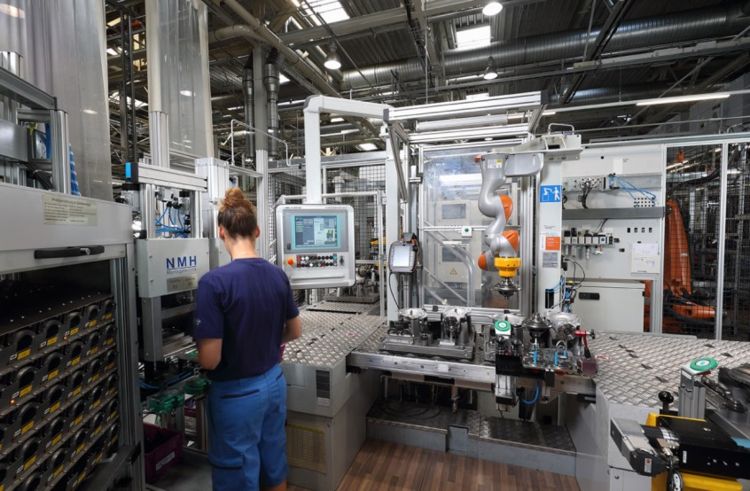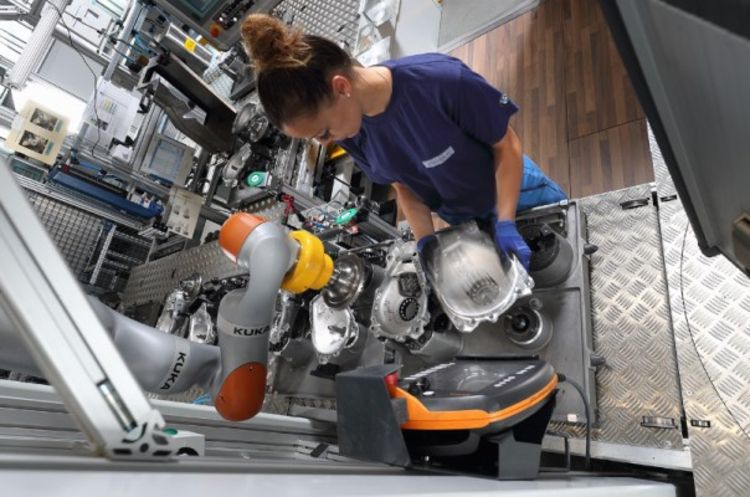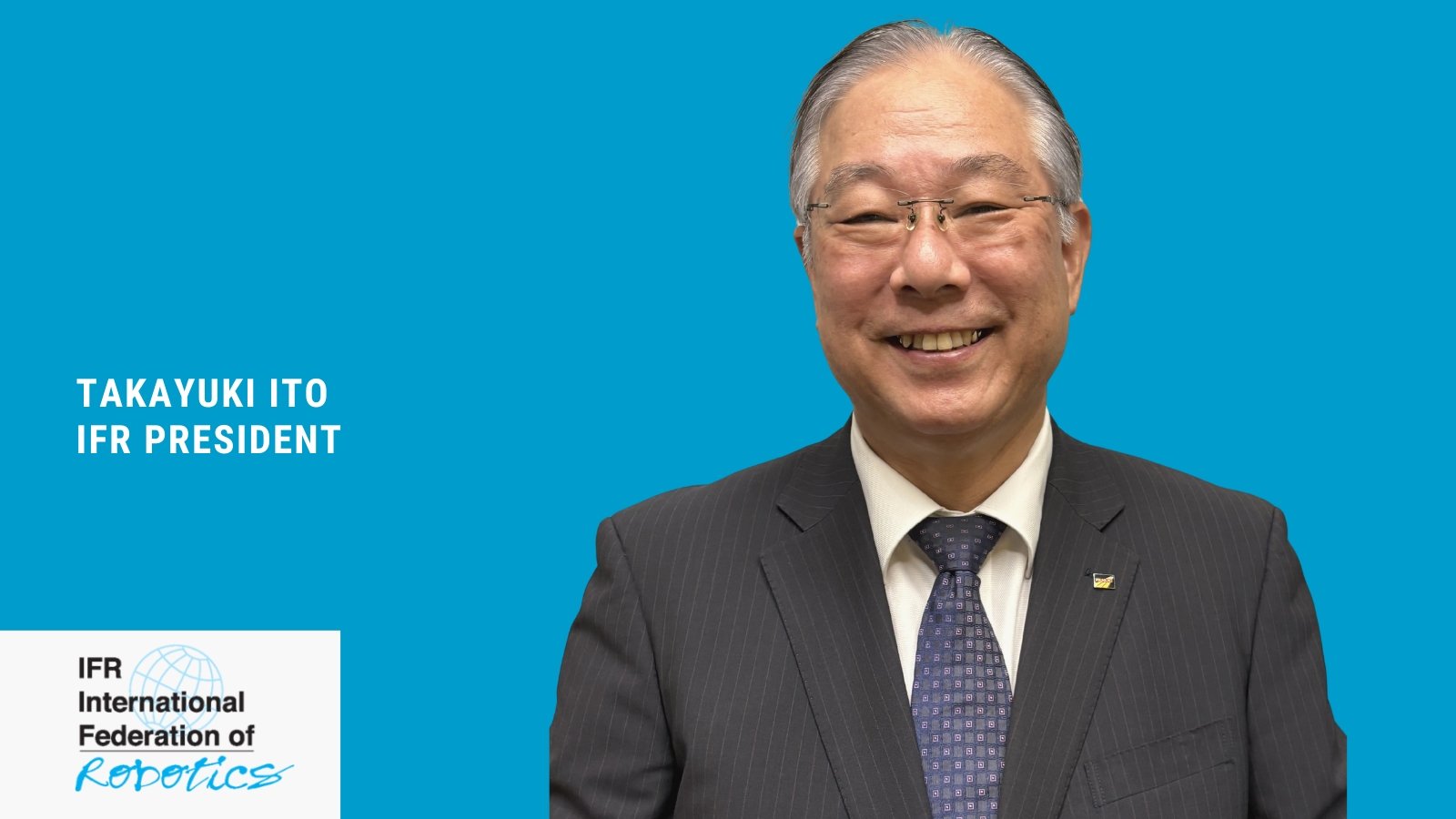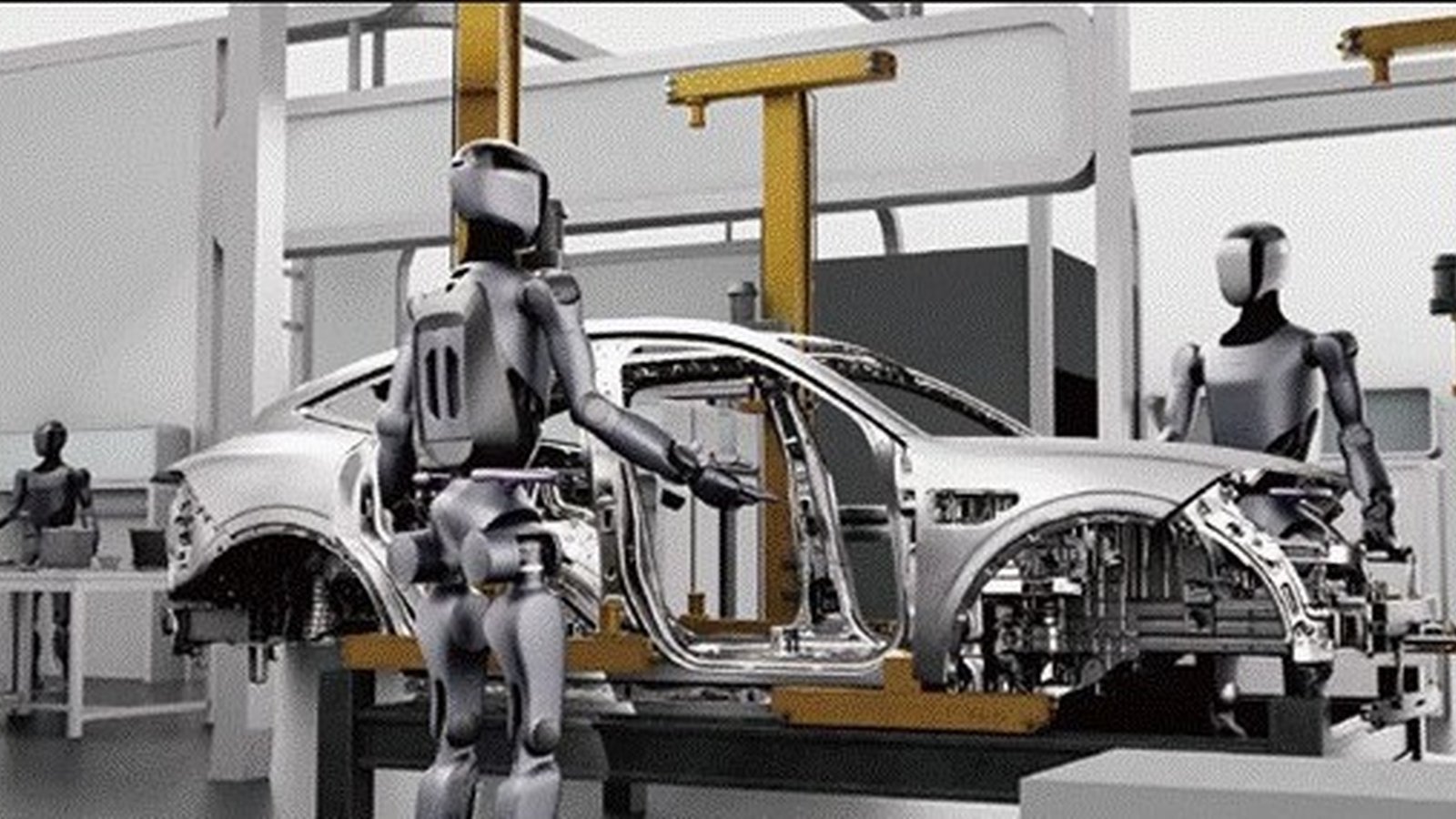
Now the robot gets a grip on things
Sequential Collaboration
The employees at BMW Group’s Dingolfing Plant have a new, highly responsive assistant: an LBR iiwa lightweight robot from KUKA, which primarily takes over monotonous and physically demanding tasks.
Identification of the task
Where an operator previously had to lift up to 5.5kg-heavy and not easy to reach differ-ential cases for the front-axle transmission by himself, the operator now works hand in hand with the robot assistant in a confined space - without any protective fences or additional safety equipment.
Why HRC was selected as a solution
Automation specialist KUKA has made it possible. For this human-robot collaboration (HRC) project, the experts designed a system which makes extremely efficient use of space through overhead installation and which can be integrated into the existing production line without having to redesign it.
For about a year, the specialists from the Application Engineering Team at KUKA tinkered away together with their colleagues at BMW in order to find this HRC solution. First implemented as a feasibility study at KUKA in Augsburg, it was then tested in operation at the plant in Dingolfing. Since June 2016, the system has been in regular production operation. Where BMW employees previously had to lift and fit cumbersome differential cases weighing up to 5.5 kilograms with millimeter precision when assembling front-axle transmissions, the robot now performs this ergonomically challenging work.
How is it solved (configuration of the workplace and different steps of operation)
The special challenge when designing the system was the limited space available for the HRC design. It had to fit into the production line for the assembly of front-axle transmissions for various vehicle models with all-wheel drive. “In contrast to a classic full automation solution, for which we would entirely redesign and then build the system, the layout here was determined by the space available,” explains Juergen Seifert, Project Manager for Sensitive Robotics at KUKA. Between the upstream and downstream stations, where further KUKA robots operate fully automatically, only the space occupied by the manual workstation was left. “That’s why we could not use a standard product like the KUKAflexFELLOW, but rather had to find another alternative for this area.”

The system had to fit into the space available in the production line. To achieve this, KUKA built a gallows-shaped steel structure on which a sensitive lightweight robot is mounted. The LBR iiwa is able to work from an overhead position and thus takes up less space. © image: KUKA
The solution developed by KUKA: a sleek, gallows-shaped steel structure on which a sensitive lightweight robot is mounted. In this way, the LBR iiwa is able to work from an inverted position. That saves space. And since the LBR iiwa has joint torque sensors in each of its seven axes, no external sensors are required. This feature, combined with the robot’s systematically lightweight construction, enables work from an inverted position. Beyond this, the gripper, as the end effector of the robot, has been equipped with an edge-free HRC case with a rounded design so that the gripper too is HRC-compatible and the operator is protected from injury at all times. The compact control cabinet too found a place in the existing production line, thus providing the interface to the system controller.

Here, the human operator and the robot now collaborate to install the differential cases for the front-axle transmissions – in less than 30 seconds. The components are fed to the system automatically along a conveyor with friction rollers and prepared by the operator, who places all of the small and lightweight parts, such as spacers and ball bearings, into the cast aluminum transmission case and the cover. The operator then presses a button to activate the robot, which carefully fits the heavy differential case in place. Here, the robot’s responsive properties play a key role. After all, the sensitive tooth flanks must not be damaged by impacts when meshing the gears. The operator then fastens the cover to the transmission.
Evaluation of the solution of the challenge
Within differential production at the BMW Group plant in Dingolfing, this is the first workstation at which the human operator and the robot are able to work together in the same workspace without any safety fencing or additional safety equipment. Juergen Seifert, KUKA Project Manager, is sure that this is just the beginning:“We will see significantly more applications of this kind in the automotive industry in the future,” notes Seifert, who credits technological advances for making this possible. As an example, this technology enables companies to adapt to the needs of an aging workforce. This is an important aspect as the working lifetime of employees increases. And it allows ergonomically unfavorable work steps to be transferred to the mechanical assistant. The advantage: the operators can carry out their jobs for longer.
“We are able to significantly improve the quality of jobs through HRC solutions,” says KUKA expert Seifert.
In Seifert’s opinion, the future requirements placed on industrial manufacturing will also make a combination of manual and automated activities essential. In times of an increasing number of variants, optimally adapting production to provide the capacity required at any particular time is a clear competitive advantage. This can be achieved, for example, thanks to flexible HRC units.
At the BMW Group’s Dingolfing Plant, the system is running smoothly. From programming to commissioning and safety inspection, KUKA performed all of the relevant steps.





